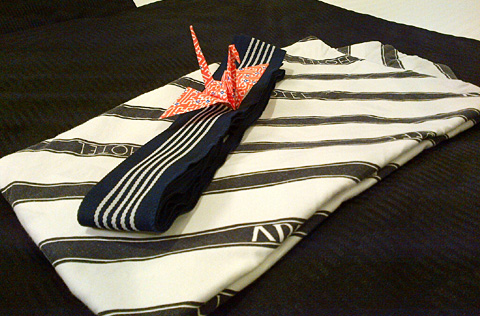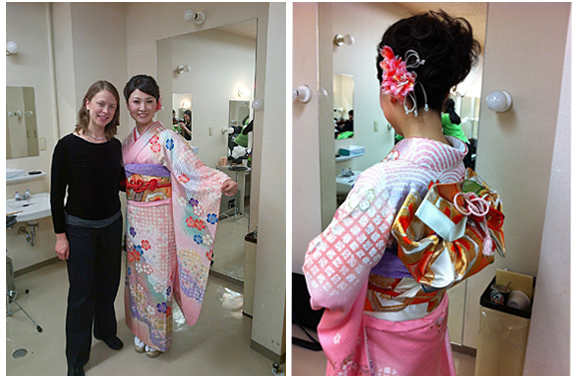Looking at the pictures I took a few weeks ago in Japan during our performances there brought back some nice memories. A number of things struck me. The Japanese attention to aesthetics and manners is quite remarkable. From the way of putting oneself together in the morning (very very tidy and neat, at least for those who value this tradition) to the way food is arranged to the details of the décor, it’s really pleasant to experience.
Our hotel rooms greeted us with a lovely folded yukata (Japanese robe) and folded origami paper crane on the bed. Small bouquets of silk flowers are displayed everywhere—from inside buses to outside convenience stores.

The full, formal “ohayo gozaimasu” (good morning) from a very frail elderly woman as she exited the elevator will stay in my mind. “Good morning,” “good evening,” “please” and “thank you” are simply the way of things. Always. And I won’t forget the effusive bowing when we entered hotels or the extraordinarily exuberant greeting from our bus driver when we first got on. Service is something Japanese take very seriously.
The audience was great fun to perform for as well, as they applauded every chance they got; the performances were dotted with applause throughout. (I find that performing for Asian audiences is unique because there are aspects of our show that they appreciate differently from Western audiences.)
For those of you who haven’t seen it, a Shen Yun performance is emceed by a man and woman who speak Chinese and the local language of whatever country we’re in. And so we had a dainty female Japanese emcee who wore a gorgeous kimono on stage. Some audience members wore kimonos to the performance, which was neat to see.

Kimonos are interesting because often people have to get them put on professionally, and once they’re on, you can’t really take them off yourself without losing the whole setup! So that means no sitting down and no restroom as long as you are wearing it. Hmmm, the price of beauty. But it IS beautiful.
In Korea, where we performed next, many things were similar, such as the bowing and the politeness. And the same is somewhat true for Taiwan, though less so. Both Korea and Taiwan were ruled by Japan for quite some time, so this might partially explain it.
But perhaps the real reason is that these traditions, as with the arts and dress of these countries, originally came from China. It’s a sad thought that somehow these things have been preserved better outside China than inside, but with a regime that at one time made an explicit goal of destroying traditional culture, I guess that’s not surprising. Maybe through these performances Shen Yun can help keep some of that good old culture alive. And one day, perhaps, bring it back to China, too.

Emily Myers
Former oboist
March 13, 2012

